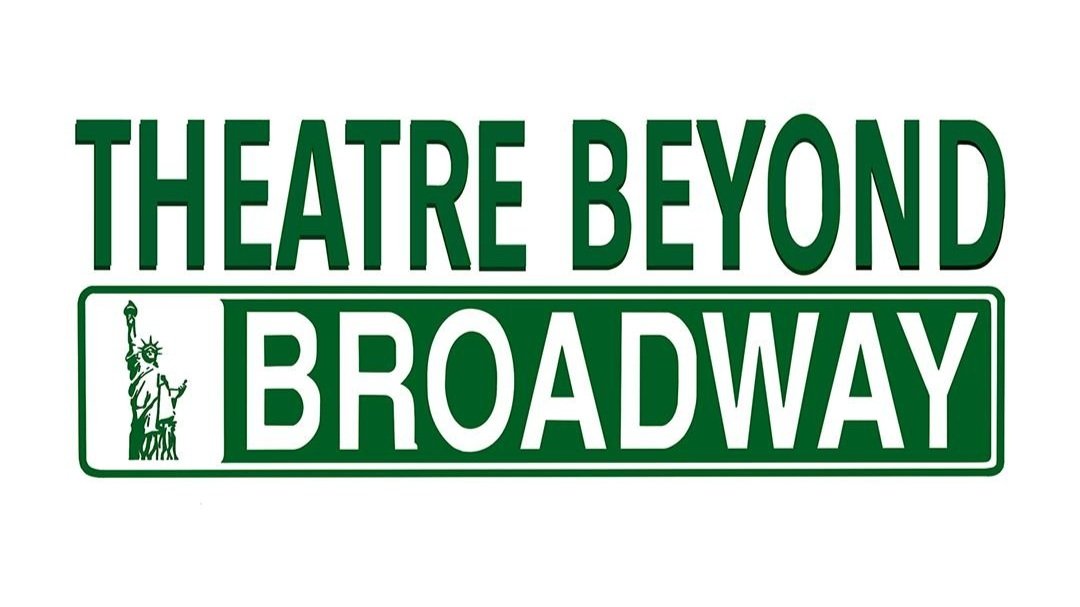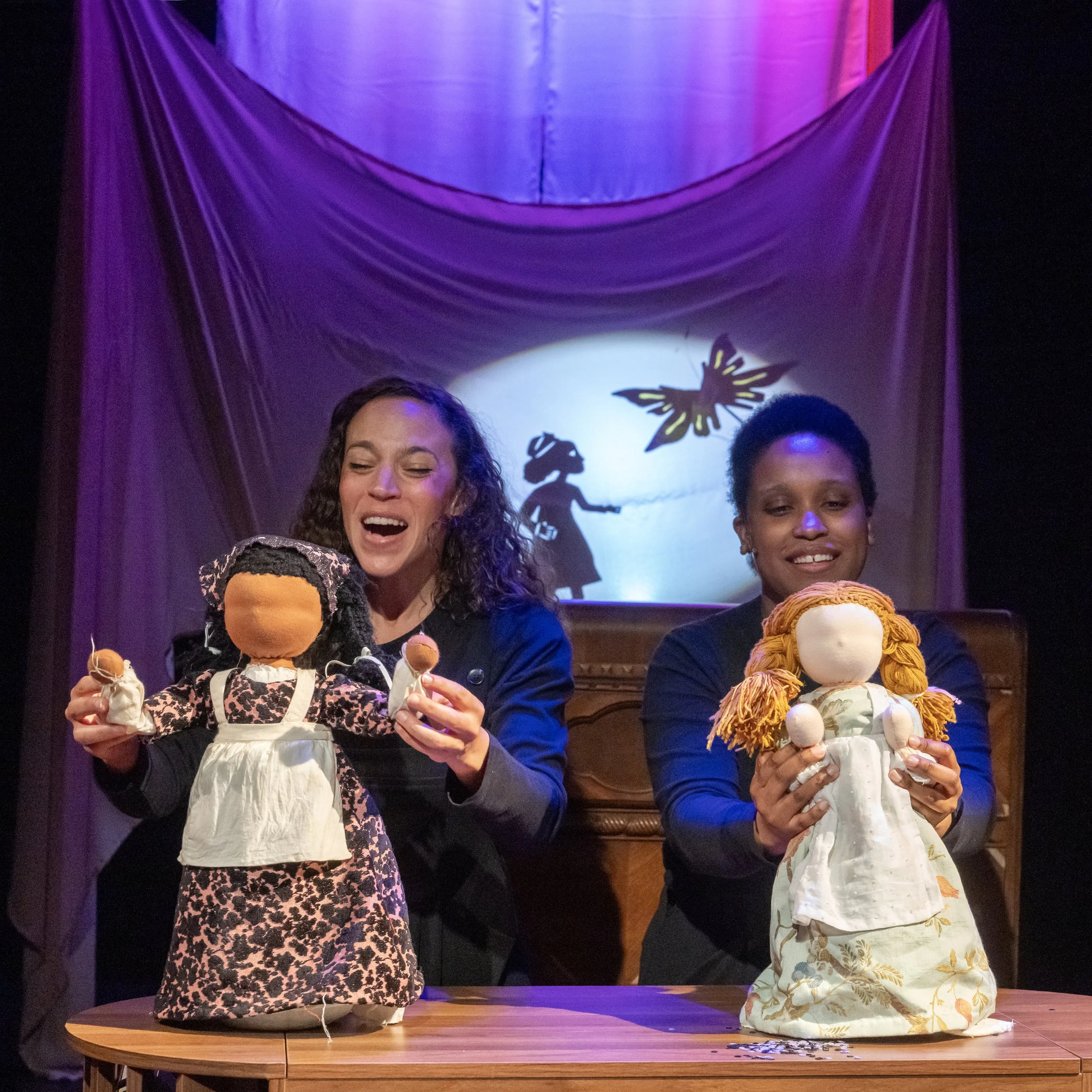The Harlem Doll Palace
Written by Alva Rogers; Directed by Ash Winkfield
HERE Arts Center | 145 6th Ave, New York, NY 10013
May 19 - June 1, 2025
A Living Room of Memory and Imagination
Whenever I think I know all there is to know about New York City, something surprises me. That’s the beauty of this ever-evolving cultural landscape — and Puppetopia 2025, presented at HERE Arts Center, is a brilliant reminder of that.
This devised puppetry piece by Alva Puppet Theatre, directed by Ash Winkfield, invites us into a world I never knew existed: Aunt Len’s Doll and Toy Museum. How had I not heard of this?
The set welcomes us into what appears to be a living room — or perhaps a dollhouse? A Persian rug anchors the space, suggesting intimacy and a lived-in, cherished collection. This is Aunt Len’s world: a museum curated from memory, history, and legacy. A former teacher with a pharmacist husband, she lived in Harlem near City College, and her collection — one of the most significant of its kind — dates back to the 18th century.
But this isn’t a lecture. This is theatre. And the dolls tell their own stories.
There are many kinds of dolls in Aunt Len’s collection, and this production brings a stunning selection to life. We’re introduced to:
Brown Nurse Doll
Army Talking Doll – painted brown, yet still with blond hair; my favorite, as she emerges as the protector of the dolls
Ninon, a French doll
Grace Kelly Doll, dressed in full wedding regalia
Early and Sarah
Hannah
The diversity and specificity of these dolls reflect different eras, cultures, and identities. Some are historical, like the Izannah Walker or Thomas Edison’s talking doll. Others are archetypal — Frozen Charlottes, topsy-turvy dolls, and fashion dolls — and still others are deeply personal, representing Black identity, care work, and ancestral memory.
We meet three dolls that have been passed down in Aunt Len’s family, each a vessel for ancestral memory. This isn’t just about the dolls — it’s about what they meant in eras where voice and agency were limited. The dolls become portals for dreaming, survival, escape, and storytelling.
I kept thinking: What do dolls mean to us? Where do they come from, and why do we hold onto them? I still have my childhood doll, made of hard plastic — a quiet companion from another time. I also treasure a set of Russian nesting dolls that belonged to my grandmother-in-law, each one holding memory inside memory. We all have that one object that carries more than nostalgia; it carries us.
The show uses a variety of theatrical devices beyond traditional puppetry: shadow work, fabric movement, song. The puppeteers — Mecca Akbar, Thalya David, Charlotte Lily Gaspard, Marcella Murray, Alva Rogers, and Ash Winkfield — were superb. Each brought depth, characterization, and agility to their performances. Though this isn’t a musical, music plays an essential role in shaping tone and mood.
This work lives at the intersection of visual art and narrative theatre. It reminded me of the devised work I studied in school — mask work, movement, and ephemera — though it’s not the medium I professionally work in, I deeply respect its artistry.
Alva Rogers and her ensemble offer us a platform — not just for entertainment, but for legacy. Stories like these have not been told enough. They are essential. The Harlem Doll Palace is a theatrical gift: deeply personal, highly imaginative, and historically rooted.
Lenon Holder Hoyte, affectionately known as Aunt Len, didn’t just collect dolls — she shared them. Her journey began when she was asked to manage a doll show to raise funds for Harlem Hospital in 1962. What started as a charitable gesture blossomed into a lifelong passion. She later brought her growing collection into schools to help children facing emotional and personal challenges, using the dolls as tools for comfort, storytelling, and healing.
It’s a shame that Aunt Len’s Doll and Toy Museum is no longer in existence, though the home that Aunt Len and her husband purchased in 1938 — 6 Hamilton Terrace in Harlem — still stands, a quiet monument to the joy, care, and community she built.
I wish I had known about Aunt Len’s museum growing up. I would’ve taken the crosstown bus to see it. But that’s the magic of storytelling — it finds you when you’re ready.
Click HERE for tickets.
HERE’s Dream Music Puppetry Program, under the artistic direction of Basil Twist, with producing direction from HERE co-founder Barbara Busackino, is one of few programs in the country to grow and commission contemporary adult puppet works, particularly works that feature live music as a collaborative element. Dream Music seeks to secure the future of puppetry by providing increased development and performance opportunities to puppet artists, and by collaborating with artists from other disciplines to develop new puppetry techniques. In addition, Dream Music brings to New York the most excellent of international puppetry, reflecting on Twist’s roots at the École Supérieure Nationale des Arts de la Marionnette in Charleville-Mezieres, France. Dream Music was inaugurated with the premiere of Basil Twist’s OBIE-award winning Symphonie Fantastique in 1998 and the opening of the Dorothy B. Williams Theatre, an intimate space created specifically for intimate puppetry. HERE’s Dream Music is also proud to house the Griff Williams Puppetry Collection. The 6 antique marionettes of Harry James, Griff Williams, Cab Calloway, Arturo Toscannini, Ted Lewis and Paul Whiteman were all performed with The Griff Williams Orchestra in the 1930s & 40s throughout America’s big band era. They have a permanent home outside the Dorothy B. Williams Theatre at HERE.
Puppetopia is made possible through the generous lead support of The Jim Henson Foundation and Cheryl Henson.
Review by Malini Singh McDonald.
Published by Theatre Beyond Broadway on May 23rd, 2025. All rights reserved.





